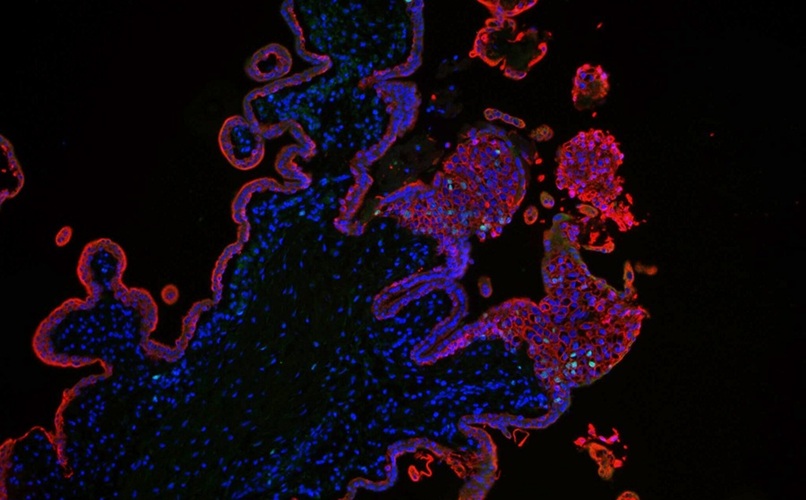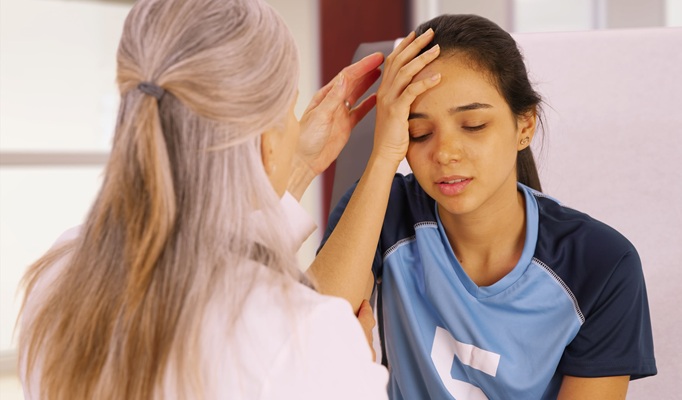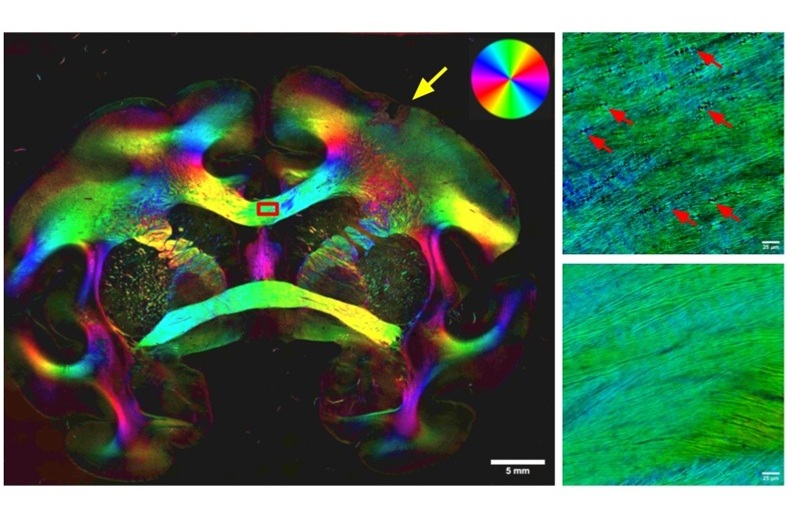Rapid Urine Test Detects Active Visceral Leishmaniasis
|
By LabMedica International staff writers Posted on 14 Jun 2013 |
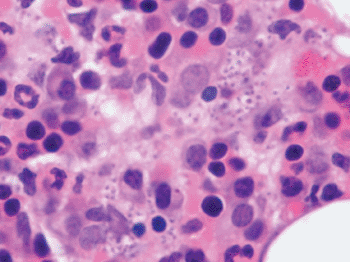
Image: Bone marrow section showing Leishmania within macrophages (Photo courtesy of University of Thessaly).
A specific urine test has been developed to identify patients with active visceral leishmaniasis (VL), also known as kala-azar.
A capture enzyme linked immunosorbent assays (ELISA) has been designed to detect individually each of three Leishmania infantum antigens in the urine of VL patients.
Scientists from The Forsyth Institute (Cambridge, MA, USA) in conjunction with those at DetectoGen Inc. (Grafton, MA, USA; www.detectogen.com), have developed a single assay assembled with the combination of the reagents used to individually detect three Leishmania antigens in the urine of VL patients. They combed reverse-phase high-performance liquid chromatography (RP-HPLC) with mass spectroscopy, to identify the three distinct L. infantum proteins. These were L. infantum iron superoxide dismutase 1, L. infantum tryparedoxin 1, and L. infantum nuclear transport factor 2.
In a sample of 20 confirmed and diagnosed VL patients, each L. infantum protein was identified in approximately 10 to 12 overlapping and nonoverlapping urine samples. Moreover, in one sample no leishmanial antigen could be identified by any of the three assays. None of the antigens was detected in the urine of patients with cutaneous leishmaniasis, Chagas disease, schistosomiasis, or tuberculosis (TB). The urinary antigen detection ELISA had a sensitivity of 89%, specificity of 100%, and limit of detection of 4 pg to 10 pg of antigen per mL of urine. This new urine-based assay identified 20/20 VL patients and did not react with 62 urine samples obtained from control subjects.
The authors concluded that the urine based capture ELISA is a noninvasive VL diagnostic test that can differentiate active disease from parasitic exposure and from cured VL patients. The assay will be useful for the diagnosis of VL in patients coinfected with the human immunodeficiency virus (HIV) as the conventional serological diagnosis of VL in these patients is problematic and not sensitive. It is likely that the combined capture ELISA test will be equally useful for the diagnosis of VL patients from the Old World. This prediction is based on the fact that the three antigens discovered in the urine of patients with VL from the New World are 98% homologous to the same group of proteins produced by L. donovani.
Kala-azar or VL is a serious and debilitating disease that affects economic productivity and quality of life, and is nearly 100% fatal if not treated promptly, and there are 500,000 new cases of disease per year around the world. The disease occurs on four continents and is endemic in 47 countries, with approximately 200 million people at risk of infection. Due to the deterioration of social and economic conditions and coinfection with HIV, the number of cases is increasing. Most of the approximately 50,000 deaths that occur each year due to VL occur in children. The study was published on May 30, 2013, in the Public Library of Science Neglected Tropical Diseases.
Related Links:
The Forsyth Institute
DetectoGen Inc.
A capture enzyme linked immunosorbent assays (ELISA) has been designed to detect individually each of three Leishmania infantum antigens in the urine of VL patients.
Scientists from The Forsyth Institute (Cambridge, MA, USA) in conjunction with those at DetectoGen Inc. (Grafton, MA, USA; www.detectogen.com), have developed a single assay assembled with the combination of the reagents used to individually detect three Leishmania antigens in the urine of VL patients. They combed reverse-phase high-performance liquid chromatography (RP-HPLC) with mass spectroscopy, to identify the three distinct L. infantum proteins. These were L. infantum iron superoxide dismutase 1, L. infantum tryparedoxin 1, and L. infantum nuclear transport factor 2.
In a sample of 20 confirmed and diagnosed VL patients, each L. infantum protein was identified in approximately 10 to 12 overlapping and nonoverlapping urine samples. Moreover, in one sample no leishmanial antigen could be identified by any of the three assays. None of the antigens was detected in the urine of patients with cutaneous leishmaniasis, Chagas disease, schistosomiasis, or tuberculosis (TB). The urinary antigen detection ELISA had a sensitivity of 89%, specificity of 100%, and limit of detection of 4 pg to 10 pg of antigen per mL of urine. This new urine-based assay identified 20/20 VL patients and did not react with 62 urine samples obtained from control subjects.
The authors concluded that the urine based capture ELISA is a noninvasive VL diagnostic test that can differentiate active disease from parasitic exposure and from cured VL patients. The assay will be useful for the diagnosis of VL in patients coinfected with the human immunodeficiency virus (HIV) as the conventional serological diagnosis of VL in these patients is problematic and not sensitive. It is likely that the combined capture ELISA test will be equally useful for the diagnosis of VL patients from the Old World. This prediction is based on the fact that the three antigens discovered in the urine of patients with VL from the New World are 98% homologous to the same group of proteins produced by L. donovani.
Kala-azar or VL is a serious and debilitating disease that affects economic productivity and quality of life, and is nearly 100% fatal if not treated promptly, and there are 500,000 new cases of disease per year around the world. The disease occurs on four continents and is endemic in 47 countries, with approximately 200 million people at risk of infection. Due to the deterioration of social and economic conditions and coinfection with HIV, the number of cases is increasing. Most of the approximately 50,000 deaths that occur each year due to VL occur in children. The study was published on May 30, 2013, in the Public Library of Science Neglected Tropical Diseases.
Related Links:
The Forsyth Institute
DetectoGen Inc.
Latest Microbiology News
- 15-Minute Blood Test Diagnoses Life-Threatening Infections in Children
- High-Throughput Enteric Panels Detect Multiple GI Bacterial Infections from Single Stool Swab Sample
- Fast Noninvasive Bedside Test Uses Sugar Fingerprint to Detect Fungal Infections
- Rapid Sepsis Diagnostic Device to Enable Personalized Critical Care for ICU Patients
- Microfluidic Platform Assesses Neutrophil Function in Sepsis Patients
- New Diagnostic Method Confirms Sepsis Infections Earlier
- New Markers Could Predict Risk of Severe Chlamydia Infection
- Portable Spectroscopy Rapidly and Noninvasively Detects Bacterial Species in Vaginal Fluid
- CRISPR-Based Saliva Test Detects Tuberculosis Directly from Sputum
- Urine-Based Assay Diagnoses Common Lung Infection in Immunocompromised People
- Saliva Test Detects Implant-Related Microbial Risks
- New Platform Leverages AI and Quantum Computing to Predict Salmonella Antimicrobial Resistance
- Early Detection of Gut Microbiota Metabolite Linked to Atherosclerosis Could Revolutionize Diagnosis
- Viral Load Tests Can Help Predict Mpox Severity
- Gut Microbiota Analysis Enables Early and Non-Invasive Detection of Gestational Diabetes
- Credit Card-Sized Test Boosts TB Detection in HIV Hotspots
Channels
Clinical Chemistry
view channel
VOCs Show Promise for Early Multi-Cancer Detection
Early cancer detection is critical to improving survival rates, but most current screening methods focus on individual cancer types and often involve invasive procedures. This makes it difficult to identify... Read more
Portable Raman Spectroscopy Offers Cost-Effective Kidney Disease Diagnosis at POC
Kidney disease is typically diagnosed through blood or urine tests, often when patients present with symptoms such as blood in urine, shortness of breath, or weight loss. While these tests are common,... Read moreMolecular Diagnostics
view channel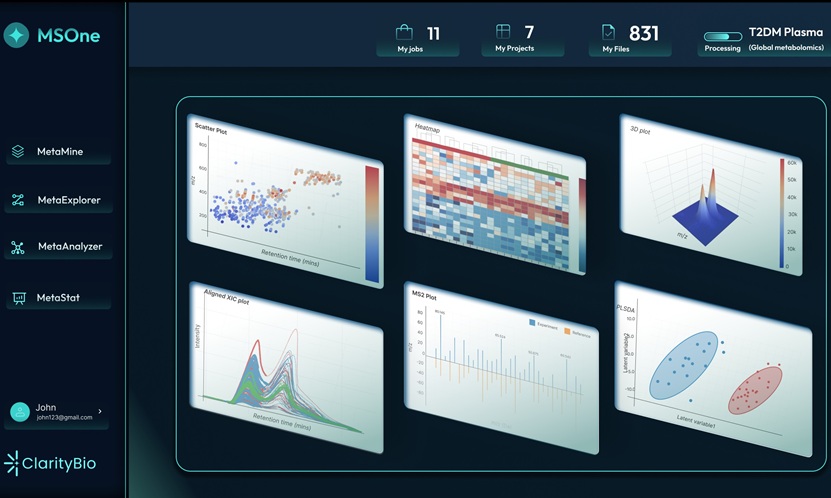
Hidden Blood Biomarkers to Revolutionize Diagnosis of Diabetic Kidney Disease
Diabetic kidney disease often develops silently, and many patients are diagnosed only after irreversible damage has occurred. Late diagnosis frequently leads to complications affecting the kidneys, heart,... Read more
Genetic Testing Trifecta Predicts Risk of Sudden Cardiac Death and Arrhythmia
Arrhythmias such as atrial fibrillation and sudden cardiac death can develop with few early symptoms, exposing patients to serious complications before treatment begins. Existing genetic tests capture... Read moreHematology
view channel
Microvesicles Measurement Could Detect Vascular Injury in Sickle Cell Disease Patients
Assessing disease severity in sickle cell disease (SCD) remains challenging, especially when trying to predict hemolysis, vascular injury, and risk of complications such as vaso-occlusive crises.... Read more
ADLM’s New Coagulation Testing Guidance to Improve Care for Patients on Blood Thinners
Direct oral anticoagulants (DOACs) are one of the most common types of blood thinners. Patients take them to prevent a host of complications that could arise from blood clotting, including stroke, deep... Read more
Viscoelastic Testing Could Improve Treatment of Maternal Hemorrhage
Postpartum hemorrhage, severe bleeding after childbirth, remains one of the leading causes of maternal mortality worldwide, yet many of these deaths are preventable. Standard care can be hindered by delays... Read more
Pioneering Model Measures Radiation Exposure in Blood for Precise Cancer Treatments
Scientists have long focused on protecting organs near tumors during radiotherapy, but blood — a vital, circulating tissue — has largely been excluded from dose calculations. Each blood cell passing through... Read moreImmunology
view channel
Chip Captures Cancer Cells from Blood to Help Select Right Breast Cancer Treatment
Ductal carcinoma in situ (DCIS) accounts for about a quarter of all breast cancer cases and generally carries a good prognosis. This non-invasive form of the disease may or may not become life-threatening.... Read more
Blood-Based Liquid Biopsy Model Analyzes Immunotherapy Effectiveness
Immunotherapy has revolutionized cancer care by harnessing the immune system to fight tumors, yet predicting who will benefit remains a major challenge. Many patients undergo costly and taxing treatment... Read morePathology
view channel
Simple Optical Microscopy Method Reveals Hidden Structures in Remarkable Detail
Understanding how microscopic fibers are organized in human tissues is key to revealing how organs function and how diseases disrupt them. However, these fiber networks have remained difficult to visualize... Read more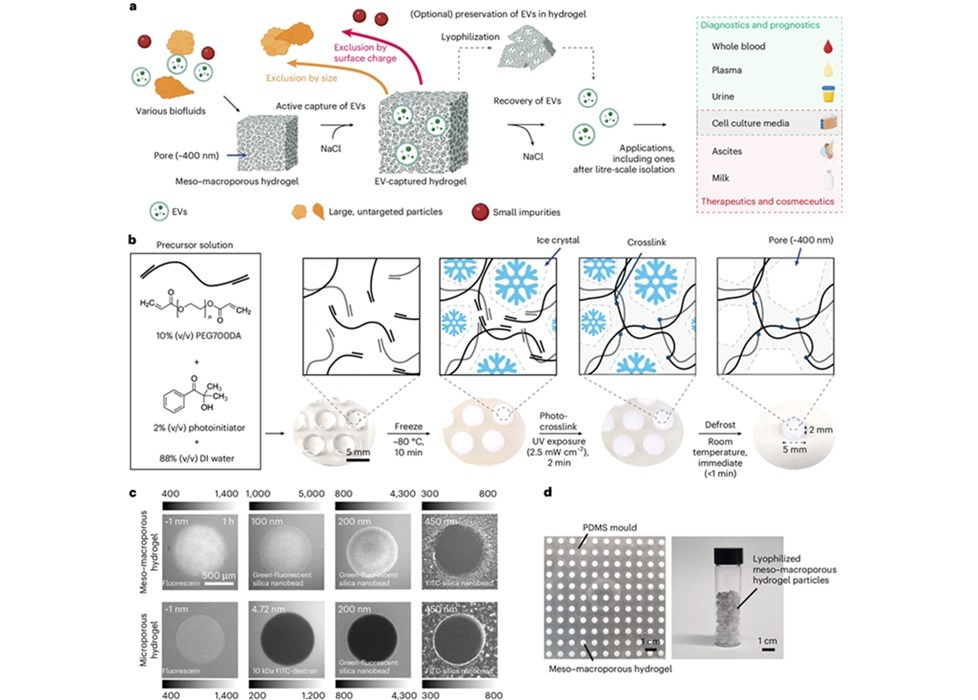
Hydrogel-Based Technology Isolates Extracellular Vesicles for Early Disease Diagnosis
Isolating extracellular vesicles (EVs) from biological fluids is essential for early diagnosis, therapeutic development, and precision medicine. However, traditional EV-isolation methods rely on ultra... Read moreTechnology
view channel
AI Saliva Sensor Enables Early Detection of Head and Neck Cancer
Early detection of head and neck cancer remains difficult because the disease produces few or no symptoms in its earliest stages, and lesions often lie deep within the head or neck, where biopsy or endoscopy... Read more
AI-Powered Biosensor Technology to Enable Breath Test for Lung Cancer Detection
Detecting lung cancer early remains one of the biggest challenges in oncology, largely because current tools are invasive, expensive, or unable to identify the disease in its earliest phases.... Read moreIndustry
view channel
Roche and Freenome Collaborate to Develop Cancer Screening Tests
Roche (Basel, Switzerland) and Freenome (Brisbane, CA, USA have entered into a strategic collaboration to commercialize Freenome's cancer screening technology in international markets.... Read more














